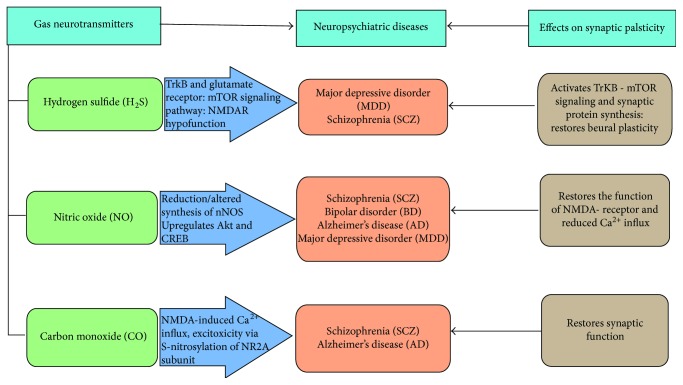Figure 2.
Role of gas neurotransmitters in neuropsychiatric diseases. The three gas neurotransmitters such as hydrogen sulfide (H2S), nitric oxide (NO), and carbon dioxide (CO) have a role in neuropsychiatric conditions such as major depressive disorder (MDD), schizophrenia (SCZ), bipolar disorder (BD), and Alzheimer's disease (AD) to maintain proper synaptic plasticity as well as neural homeostasis. H2S has a role in tropomyosin receptor kinase B (TrKB) and glutamate as well as mechanistic targets of rapamycin (mTOR) signaling pathways, and it activates the TrKB-mTOR signaling pathway as well as synaptic protein in MDD. NO has a role in the regulation of altered synthesis of nNOS as well as upregulates Akt and cyclic AMP (cAMP) response element binding (CREB) protein which restores function in N-methyl-D aspartate (NMDA) receptor and reduces Ca2+ influx in schizophrenia, MDD, and AD. CO has a role in NMDA-induced calcium ion (Ca2+) influx or excitotoxicity via S-nitrosylation of antiglutamate receptor NMDAR2A (NR2A) subunit and restores synaptic function in AD and SCZ. However, these gas neurotransmitters work on various ways to maintain or restore synaptic plasticity in these neuropsychiatric diseases.

